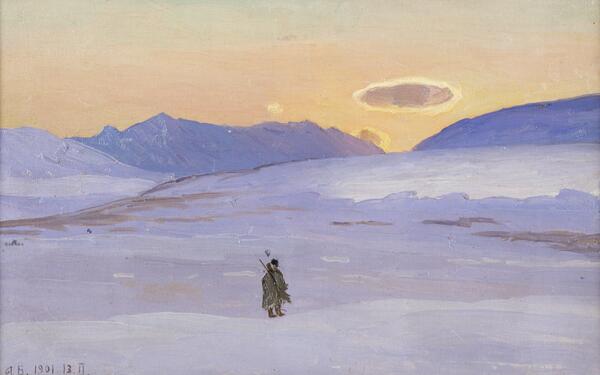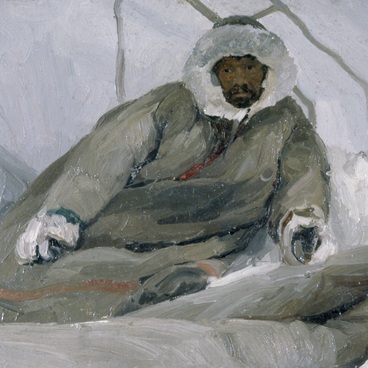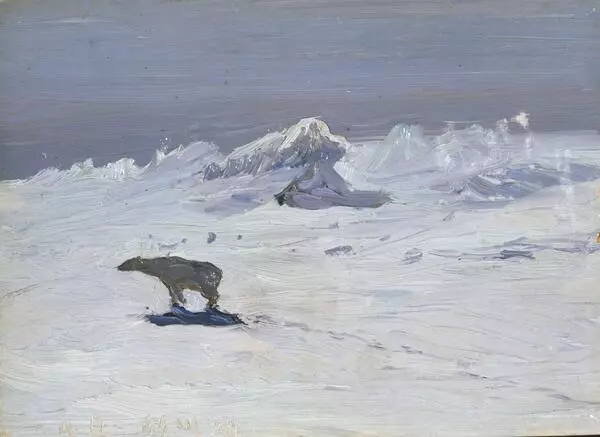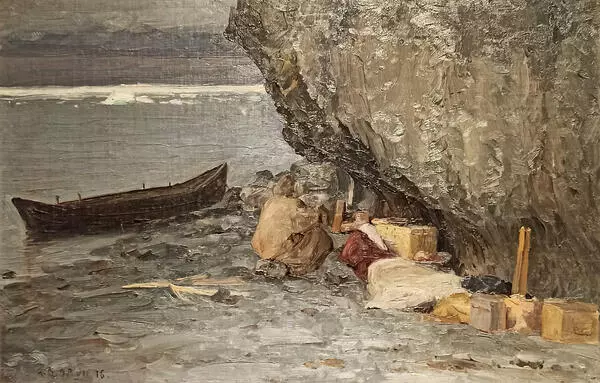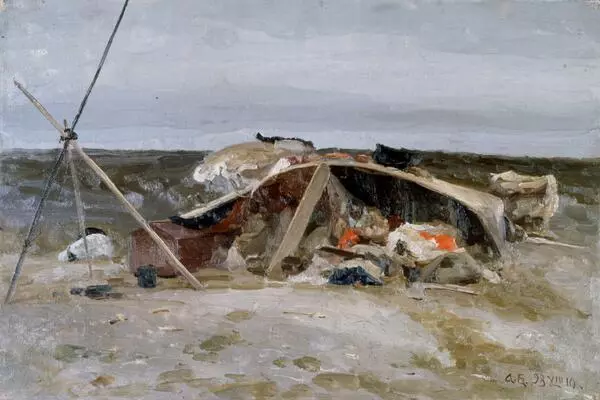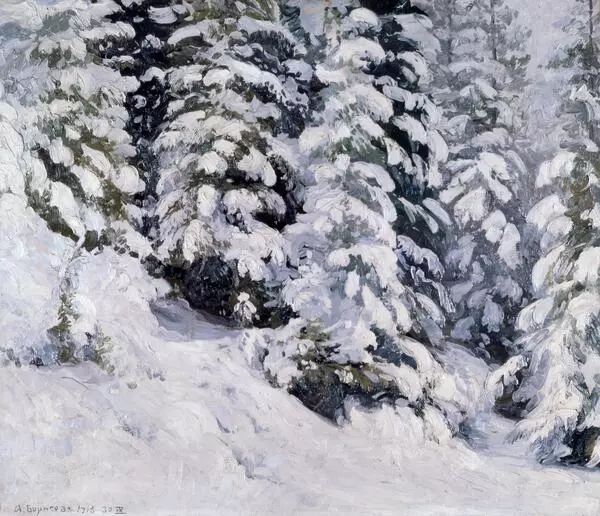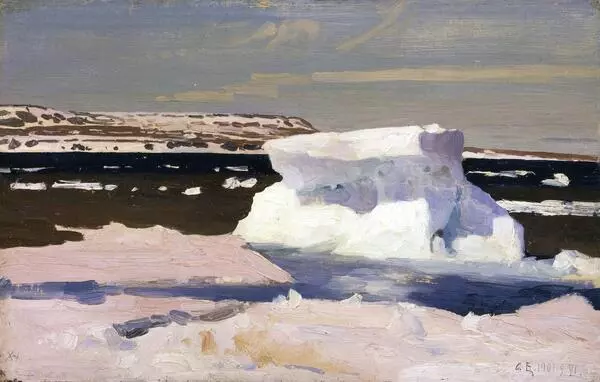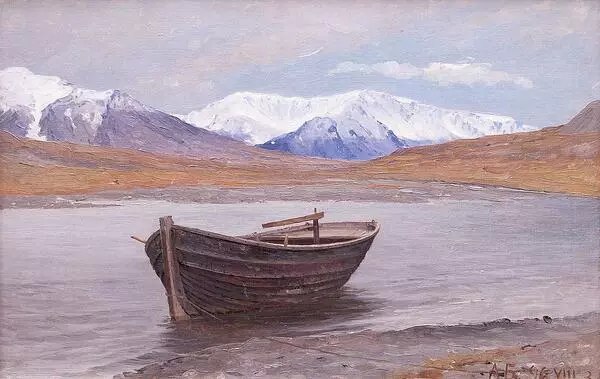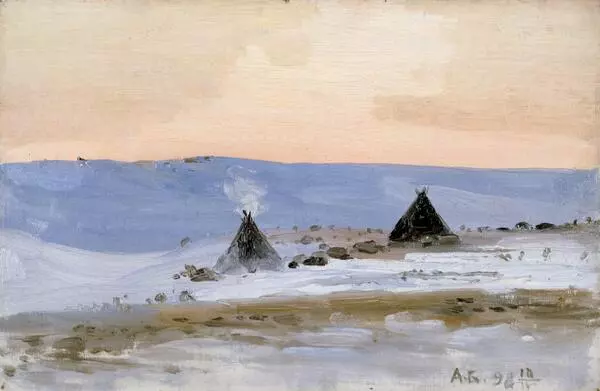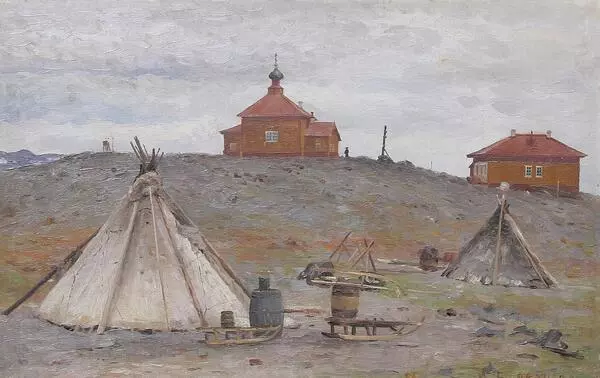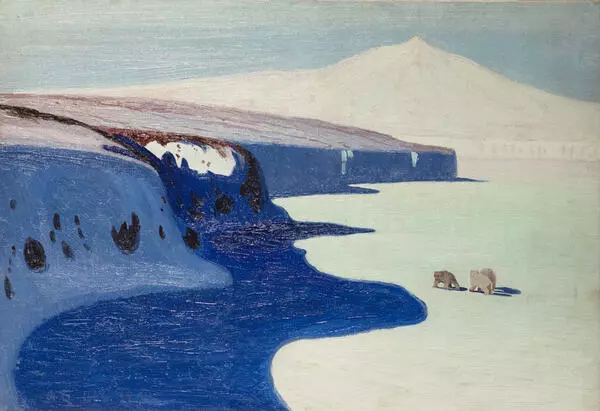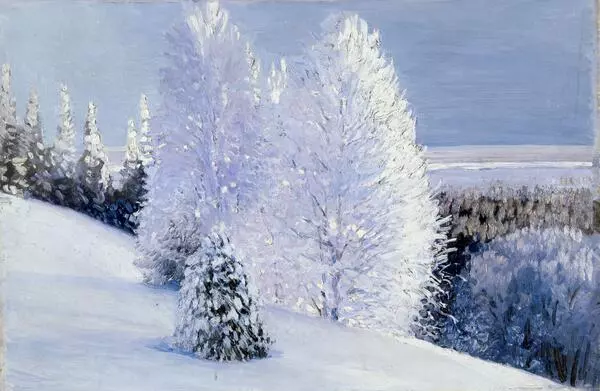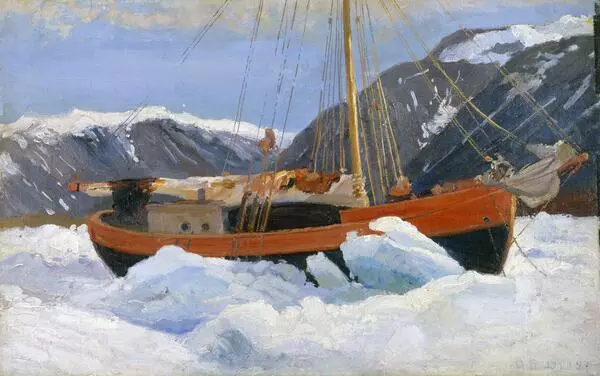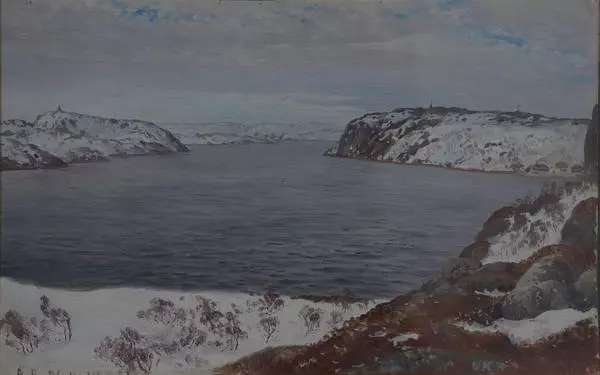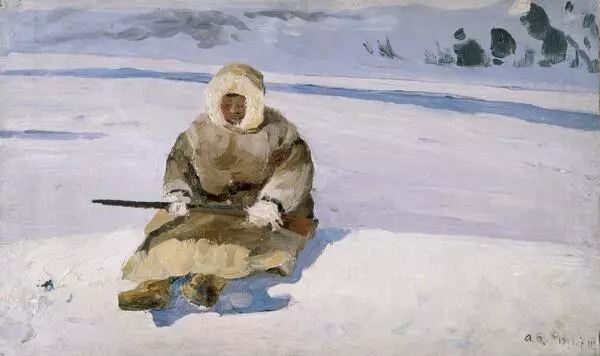The picture Reindeer Hunting by Alexander Borisov shows a skillful Nenets hunter heading resolutely towards the passage between two blue mountains in the distance. The sweeping slopes go down to the valley, forming some kind of curtains that, as the viewer can assume, hide vast expanses of flat land behind them. Above the valley, in the pink-yellowish sky, a mauve cloud is hovering low. Sun rays slanting from behind the mountains paint its edges golden, an effect that makes the cloud dissolve in the air, giving a feeling of voluminous space.
Borisov, who was an expert in Nenets culture, wrote: ‘The Samoyed is very fond of his tundra. And how wouldn’t he be? It nourishes him. He was born and raised here, he spends his days in this land. He feels comfortable in the middle of that boundless desert. He feels at ease and full of joy, and even more so, if he sees his immense reindeer herd – his life – grazing in the tundra. The Samoyed adores reindeer, but instead of using them wisely, he makes the herd get bigger and bigger every year. And eventually the tundra, no matter how vast it is, becomes overwhelmed. There are only so many reindeer the land can feed; nature cannot be fooled. And so, because of malnutrition, terrible epidemics start spreading in the herd. A lot of reindeer end up dying without benefiting the breeder and contaminate the tundra, making it dangerous for the next reindeer generations. Then, an unnaturally fast multiplication follows, and then again, a die-off and so on, and the Samoyeds cannot get out of poverty. Meanwhile, the wealth slips away in such a silly manner! ’
The artist knew some would say that in the North, it was impossible to encounter colours as vivid as those of the South. To contradict such claims, he wrote: “I”ve seen studies painted in Morocco more than once, and some of them struck me as very similar to the familiar northern scenery. In the Arab cities, with their white houses, the bright meridian sun gives the reflected light so much power that the shadows start dissolving, fading away, assuming most bizarre tones. It bears an uncanny similarity to the reflections I see on the snow-covered mountains in Novaya Zemlya or the Vaygach Island on a summer day. Moreover, those Moroccan studies made me understand the mediocrity and monotony of the southern sky: what a far cry from our northern palette! ”
Borisov, who was an expert in Nenets culture, wrote: ‘The Samoyed is very fond of his tundra. And how wouldn’t he be? It nourishes him. He was born and raised here, he spends his days in this land. He feels comfortable in the middle of that boundless desert. He feels at ease and full of joy, and even more so, if he sees his immense reindeer herd – his life – grazing in the tundra. The Samoyed adores reindeer, but instead of using them wisely, he makes the herd get bigger and bigger every year. And eventually the tundra, no matter how vast it is, becomes overwhelmed. There are only so many reindeer the land can feed; nature cannot be fooled. And so, because of malnutrition, terrible epidemics start spreading in the herd. A lot of reindeer end up dying without benefiting the breeder and contaminate the tundra, making it dangerous for the next reindeer generations. Then, an unnaturally fast multiplication follows, and then again, a die-off and so on, and the Samoyeds cannot get out of poverty. Meanwhile, the wealth slips away in such a silly manner! ’
The artist knew some would say that in the North, it was impossible to encounter colours as vivid as those of the South. To contradict such claims, he wrote: “I”ve seen studies painted in Morocco more than once, and some of them struck me as very similar to the familiar northern scenery. In the Arab cities, with their white houses, the bright meridian sun gives the reflected light so much power that the shadows start dissolving, fading away, assuming most bizarre tones. It bears an uncanny similarity to the reflections I see on the snow-covered mountains in Novaya Zemlya or the Vaygach Island on a summer day. Moreover, those Moroccan studies made me understand the mediocrity and monotony of the southern sky: what a far cry from our northern palette! ”

